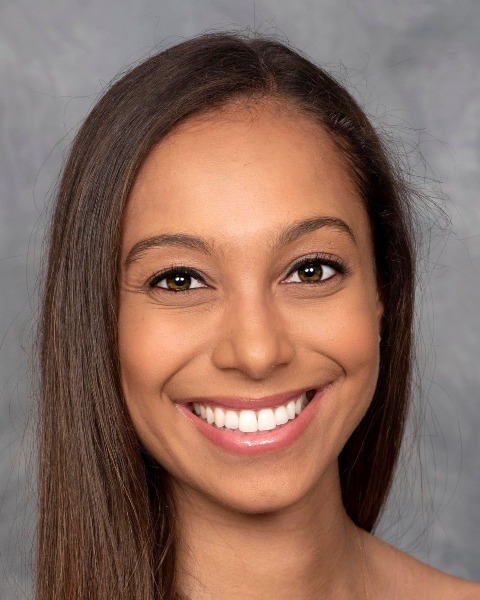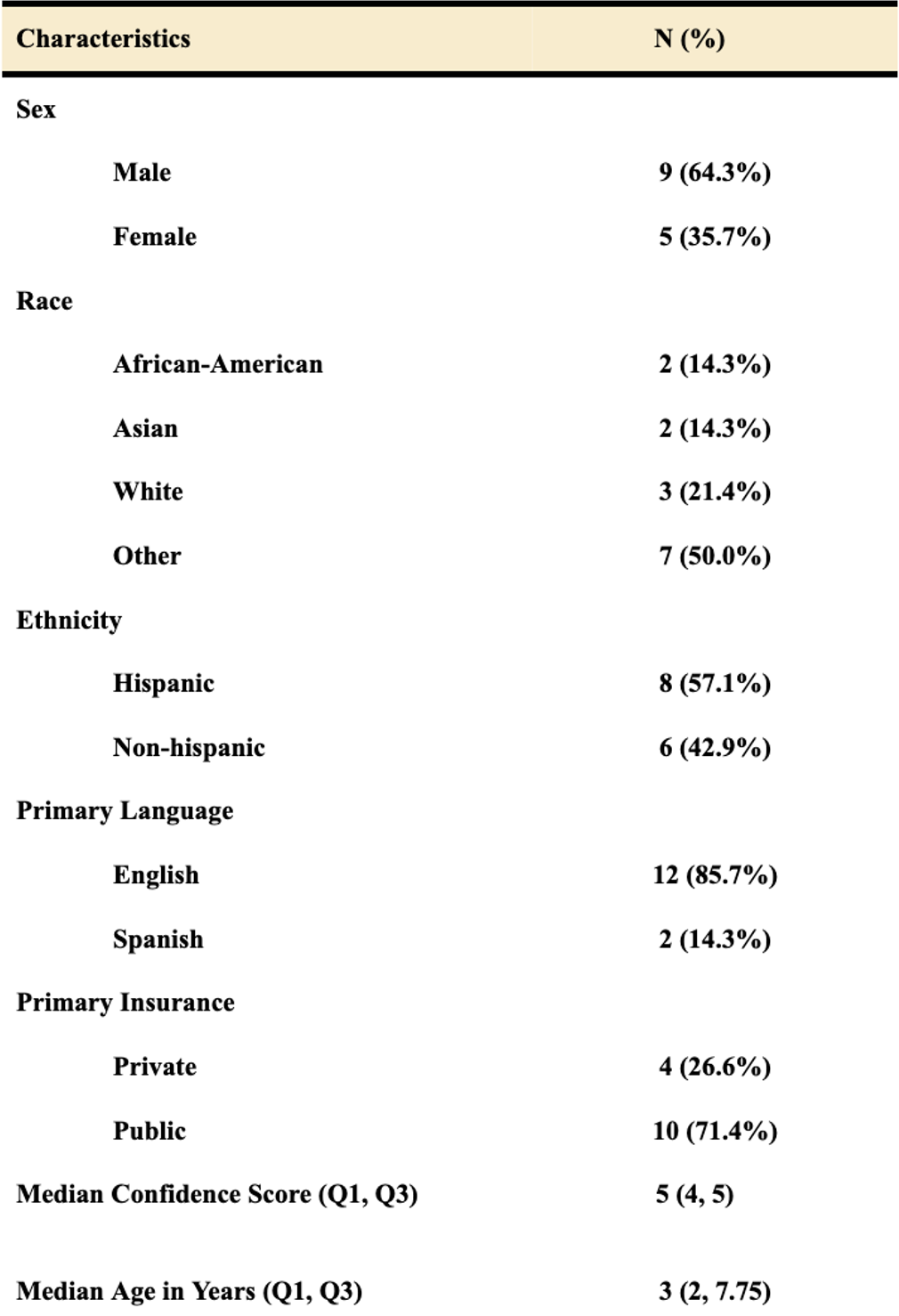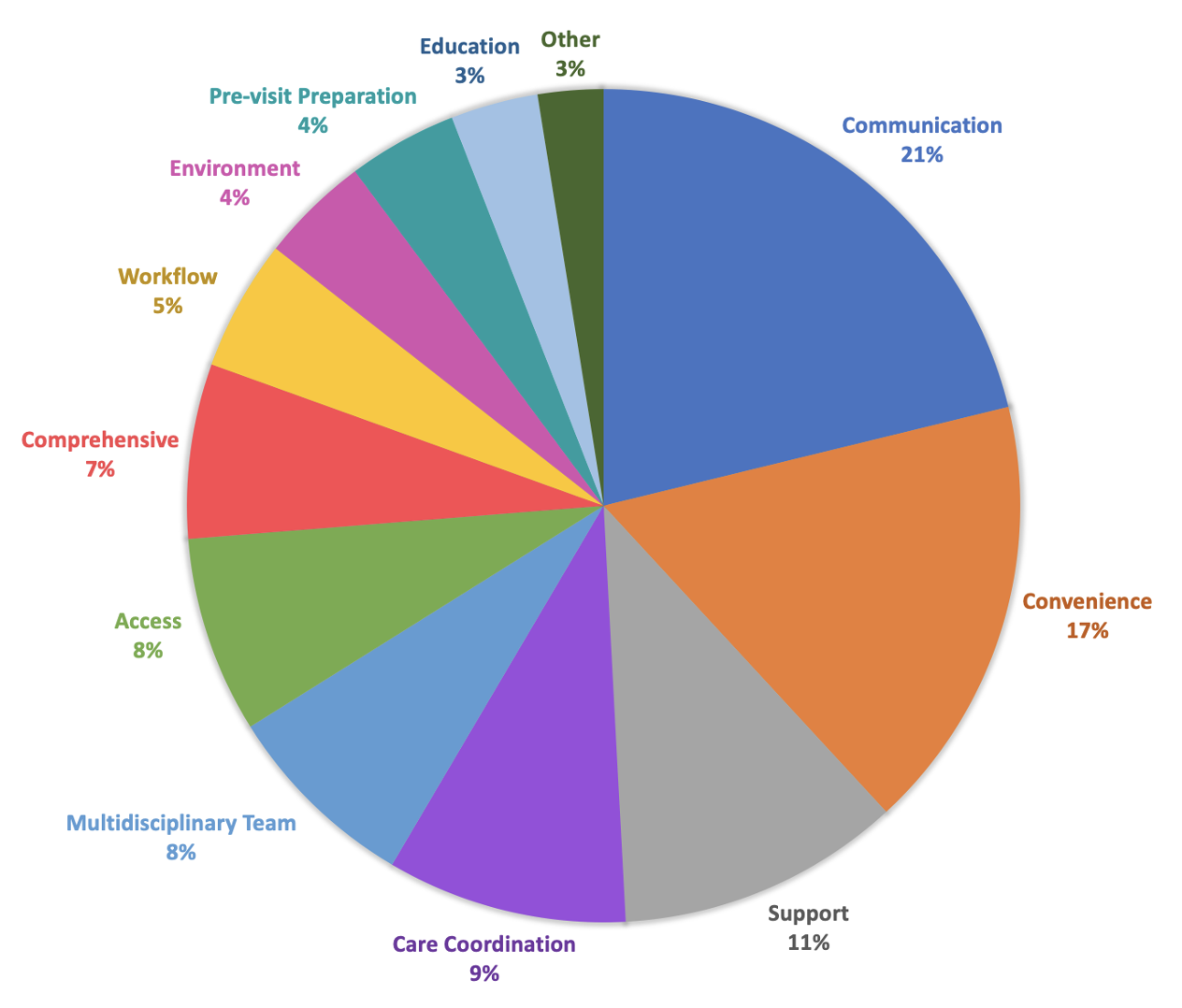Children with Chronic Conditions
Category: Abstract Submission
Children with Chronic Conditions IV
613 - Qualitative Feedback from Caregivers in a Multidisciplinary Pediatric Neuromuscular Clinic
Monday, April 25, 2022
3:30 PM - 6:00 PM US MT
Poster Number: 613
Publication Number: 613.404
Publication Number: 613.404
Skylar M. Hess, Icahn School of Medicine at Mount Sinai, New York, NY, United States; Liam R. Butler, Icahn School of Medicine at Mount Sinai, New York, NY, United States; Dorothy O. Adu-Amankwah, Icahn School of Medicine at Mount Sinai, New York, NY, United States; Daniel Baboolal, Icahn School of Medicine at Mount Sinai, New York, NY, United States; Sheena Ranade, Mount Sinai Health System, New York, NY, United States; Brijen J. Shah, Mount Sinai Health System and Icahn School of Medicine at Mount Sinai, New York, NY, United States; Robert W. Fields, Icahn School of Medicine at Mount Sinai, Larchmont, NY, United States; Elaine Lin, Icahn School of Medicine at Mount Sinai, Jersey City, NJ, United States

Skylar M. Hess, BA (she/her/hers)
Medical Student
Icahn School of Medicine at Mount Sinai
New York, New York, United States
Presenting Author(s)
Background: Multidisciplinary care teams are an essential part of caring for children with complex medical needs. Our team consists of providers from 13 specialties that provide coordinated care in a single visit to patients with cerebral palsy or neuromuscular disorders. Patient satisfaction and communication are important outcomes to assess while developing these programs. There are few published studies on families’ experiences and perceived quality of care in multidisciplinary clinics.
Objective: This study aims to explore drivers of family satisfaction and communication in a multidisciplinary pediatric neuromuscular clinic through qualitative feedback.
Design/Methods: Caregivers of patients attending the clinic were administered a survey assessing family sentiments toward the efficiency, care coordination, and communication they experienced. Surveys were audio-recorded and transcribed verbatim. Two researchers independently coded transcripts and reconciled discrepancies after a code was established from transcripts. Descriptive statistics were used to analyze data.
Results: Surveys were distributed to caregivers of 14 patients, with a median patient age of 3 years (2-7.75). Patients were 64.3% male, and 57.1% identified as Hispanic (Table 1). When asked how confident caregivers feel in taking care of their child as a result of the clinic, the median response was 5/5 (4-5). Providers adequately communicated the next steps in the patient's care according to 100% of caregivers. Table 2 presents direct caregiver quotes associated with commonly mentioned themes. The most frequent themes families emphasized included communication, convenience, support, care coordination, and multidisciplinary team (Figure 1). Caregivers affirmed that the unique format of the clinic improves access to care, enhances efficiency, and promotes provider teamwork and shared care planning. Caregivers also reiterated the importance of communication and appreciated opportunities for education and affirmation. Families noted that organization of pre-visit schedules and after-visit summaries, as well as ensuring that the clinic environment is suitable for patients with complex needs, could be improved.Conclusion(s): Multidisciplinary team models have great potential to streamline medical care and promote teamwork among providers who care for children with complex medical needs. Our study demonstrates that caregivers believe this model is both efficient and convenient for patients who would typically need multiple appointments over multiple days. Communication with caregivers can be enhanced with pre-visit schedules and after-visit summaries.
Table 1. Patient Demographics Patient demographics including sex, race, ethnicity, language, insurance, and age are displayed. N denotes the sample size of 14. Confidence scores range from 1-5, with 5 being most confident. This score represents how caregivers rated their confidence in caring for patients as a result of the clinic. The median confidence score in this sample was 5.
Patient demographics including sex, race, ethnicity, language, insurance, and age are displayed. N denotes the sample size of 14. Confidence scores range from 1-5, with 5 being most confident. This score represents how caregivers rated their confidence in caring for patients as a result of the clinic. The median confidence score in this sample was 5.
Figure 1. Distribution of Major Themes Themes were manually counted to generate frequencies, which were then calculated as percentages relative to the total number of comments about themes. For example, communication, the most common theme, was mentioned 25 times out of 118 comments about various themes, generating a value of 21%.
Themes were manually counted to generate frequencies, which were then calculated as percentages relative to the total number of comments about themes. For example, communication, the most common theme, was mentioned 25 times out of 118 comments about various themes, generating a value of 21%.
Objective: This study aims to explore drivers of family satisfaction and communication in a multidisciplinary pediatric neuromuscular clinic through qualitative feedback.
Design/Methods: Caregivers of patients attending the clinic were administered a survey assessing family sentiments toward the efficiency, care coordination, and communication they experienced. Surveys were audio-recorded and transcribed verbatim. Two researchers independently coded transcripts and reconciled discrepancies after a code was established from transcripts. Descriptive statistics were used to analyze data.
Results: Surveys were distributed to caregivers of 14 patients, with a median patient age of 3 years (2-7.75). Patients were 64.3% male, and 57.1% identified as Hispanic (Table 1). When asked how confident caregivers feel in taking care of their child as a result of the clinic, the median response was 5/5 (4-5). Providers adequately communicated the next steps in the patient's care according to 100% of caregivers. Table 2 presents direct caregiver quotes associated with commonly mentioned themes. The most frequent themes families emphasized included communication, convenience, support, care coordination, and multidisciplinary team (Figure 1). Caregivers affirmed that the unique format of the clinic improves access to care, enhances efficiency, and promotes provider teamwork and shared care planning. Caregivers also reiterated the importance of communication and appreciated opportunities for education and affirmation. Families noted that organization of pre-visit schedules and after-visit summaries, as well as ensuring that the clinic environment is suitable for patients with complex needs, could be improved.Conclusion(s): Multidisciplinary team models have great potential to streamline medical care and promote teamwork among providers who care for children with complex medical needs. Our study demonstrates that caregivers believe this model is both efficient and convenient for patients who would typically need multiple appointments over multiple days. Communication with caregivers can be enhanced with pre-visit schedules and after-visit summaries.
Table 1. Patient Demographics
 Patient demographics including sex, race, ethnicity, language, insurance, and age are displayed. N denotes the sample size of 14. Confidence scores range from 1-5, with 5 being most confident. This score represents how caregivers rated their confidence in caring for patients as a result of the clinic. The median confidence score in this sample was 5.
Patient demographics including sex, race, ethnicity, language, insurance, and age are displayed. N denotes the sample size of 14. Confidence scores range from 1-5, with 5 being most confident. This score represents how caregivers rated their confidence in caring for patients as a result of the clinic. The median confidence score in this sample was 5.Figure 1. Distribution of Major Themes
 Themes were manually counted to generate frequencies, which were then calculated as percentages relative to the total number of comments about themes. For example, communication, the most common theme, was mentioned 25 times out of 118 comments about various themes, generating a value of 21%.
Themes were manually counted to generate frequencies, which were then calculated as percentages relative to the total number of comments about themes. For example, communication, the most common theme, was mentioned 25 times out of 118 comments about various themes, generating a value of 21%.